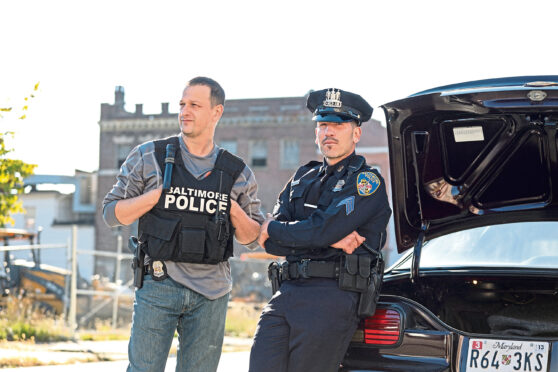
Television perhaps reached its peak in 2004 with the third season of David Simon’s sublime The Wire.
The former Baltimore Sun crime journalist’s forensic analysis of the city’s police and other institutions laid out the broken systems with a cast list to rival War And Peace.
We Own This City is a spiritual sequel to The Wire. Simon’s new series is based on a true story, of the rise and fall of the Baltimore Police Department’s Gun Trace Task Force and its star officer, Sergeant Wayne Jenkins.
Jon Bernthal plays Jenkins, the city’s star cop who also happens to be one of its dirtiest. His job was to seize guns, of which, I’m not sure if you’ve heard, America has a fair few. In fact there are enough to give everyone in the USA a gun each and still have 63 million left over, which is an entirely normal statistic for an entirely normal country.
Jenkins is portrayed largely as a selfish, grasping criminal because that’s essentially what he was; the worst part was his superiors were roughly aware of this but because he delivered headlines about busting criminals they kept him around.
Like a lot of Simon’s work the story is complicated and paints law enforcement, like a lot of our institutions, as failing Heath Robinson contraptions.
The problem is, as he suggests, what is the alternative?
We Own This City, Sky Atlantic

Enjoy the convenience of having The Sunday Post delivered as a digital ePaper straight to your smartphone, tablet or computer.
Subscribe for only £5.49 a month and enjoy all the benefits of the printed paper as a digital replica.
Subscribe